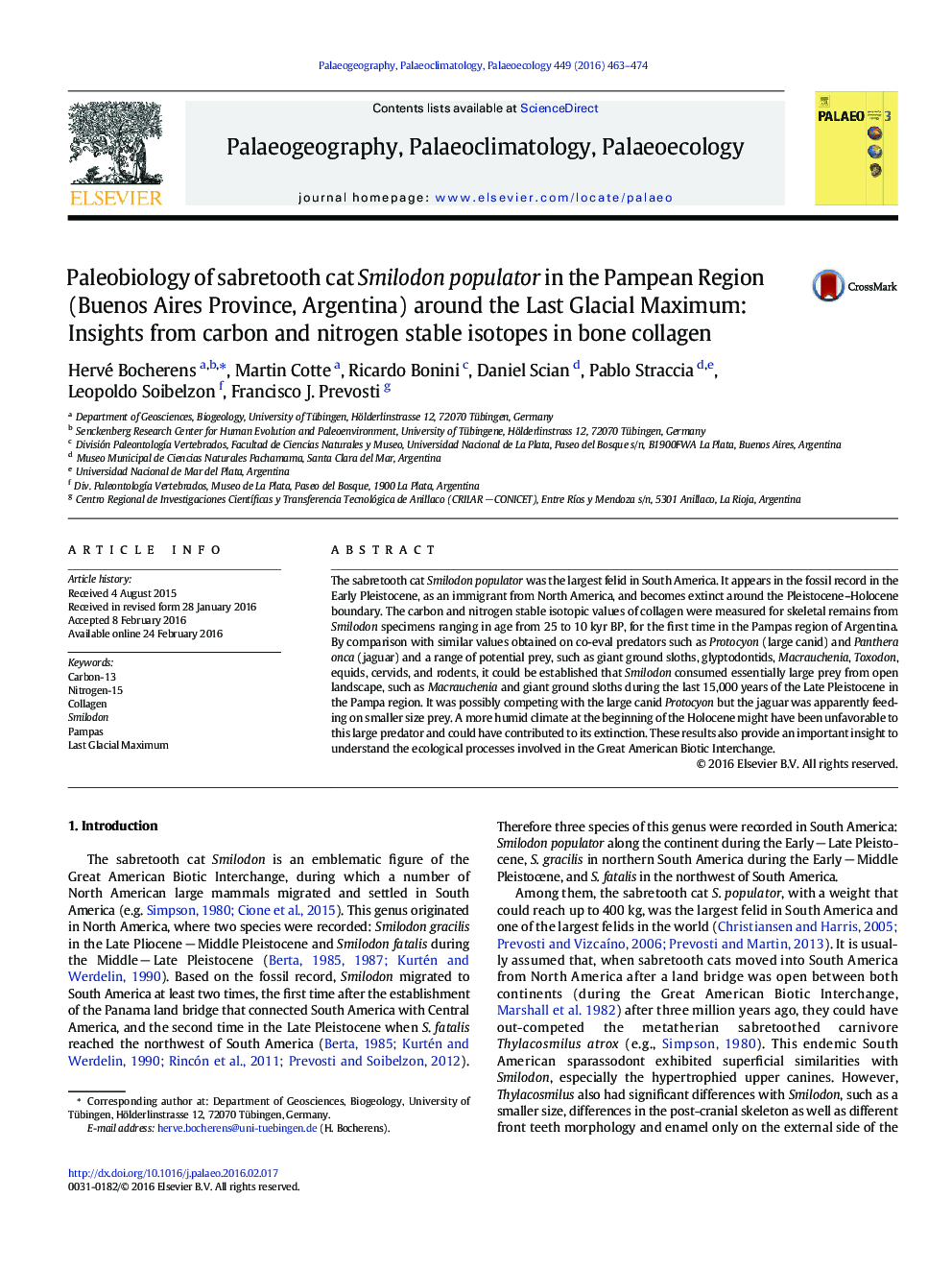| کد مقاله | کد نشریه | سال انتشار | مقاله انگلیسی | نسخه تمام متن |
|---|---|---|---|---|
| 4465779 | 1622142 | 2016 | 12 صفحه PDF | دانلود رایگان |

• The sabretooth cat Smilodon populator was the largest felid in South America.
• First δ13C and δ15N for Smilodon from 25 to 10 kyr BP in the Pampas
• Predator of large prey from open landscape (Macrauchenia, giant ground sloths)
• Smilodon was possibly competing with the large canid Protocyon but not with the jaguar.
• Holocene climate change may have contributed to its extinction.
The sabretooth cat Smilodon populator was the largest felid in South America. It appears in the fossil record in the Early Pleistocene, as an immigrant from North America, and becomes extinct around the Pleistocene–Holocene boundary. The carbon and nitrogen stable isotopic values of collagen were measured for skeletal remains from Smilodon specimens ranging in age from 25 to 10 kyr BP, for the first time in the Pampas region of Argentina. By comparison with similar values obtained on co-eval predators such as Protocyon (large canid) and Panthera onca (jaguar) and a range of potential prey, such as giant ground sloths, glyptodontids, Macrauchenia, Toxodon, equids, cervids, and rodents, it could be established that Smilodon consumed essentially large prey from open landscape, such as Macrauchenia and giant ground sloths during the last 15,000 years of the Late Pleistocene in the Pampa region. It was possibly competing with the large canid Protocyon but the jaguar was apparently feeding on smaller size prey. A more humid climate at the beginning of the Holocene might have been unfavorable to this large predator and could have contributed to its extinction. These results also provide an important insight to understand the ecological processes involved in the Great American Biotic Interchange.
Figure optionsDownload high-quality image (149 K)Download as PowerPoint slide
Journal: Palaeogeography, Palaeoclimatology, Palaeoecology - Volume 449, 1 May 2016, Pages 463–474